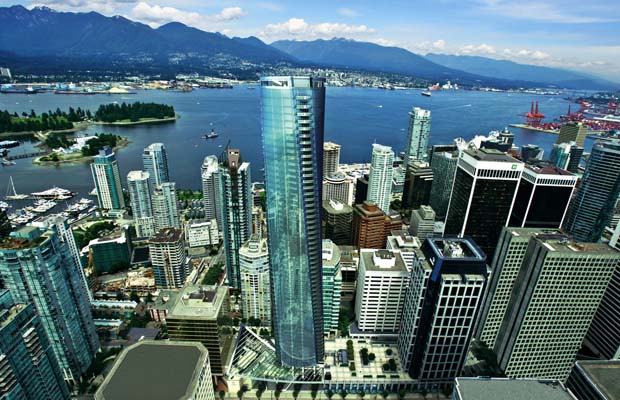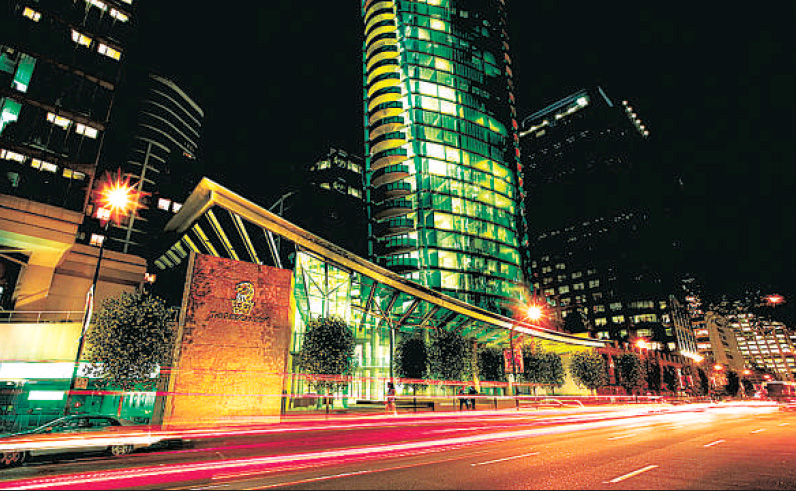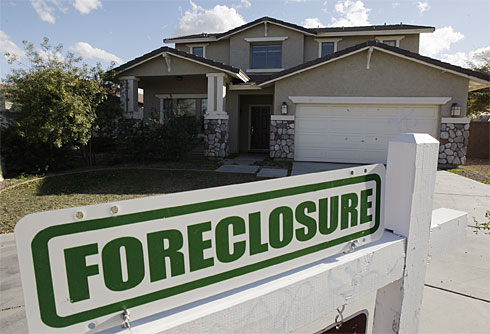Bruce Constantineau
Sun

Rendering of Arthur Erickson’s residences at The Ritz-Carlton tower as it was supposed to look on the city skyline. Photograph by: Handout,

A rendering of the proposed Ritz-Carlton tower.
Going, going, gone.
The half-billion-dollar Ritz-Carlton hotel-condo project in downtown Vancouver is officially dead — a victim of the global recession.
Buyers who purchased luxury condos in the 60-storey tower that was supposed to be built at 1155 West Georgia are getting a letter this week telling them the project has been cancelled.
The letter from lawyers representing developer Holborn Group states that “worldwide economic turmoil” has had a significant negative impact on the sale of units in the project, as it has with most other Metro Vancouver developments.
“As a result, sales have not met the developer’s expectations,” the letter states. ” … We hereby give you notice that the vendor cancels and terminates the contract due to the fact that the vendor has not entered into binding contracts of purchase and sale for at least 75 strata lots in the development.
“As a result of this termination, the contract is now at an end.”
Holborn had sold about 62 of the 123 condos in the Arthur Erickson-designed twisting tower. Buyers will get their deposits back.
Condo prices in the project — called The Residences at the Ritz-Carlton — ranged from $1.4 million to $28 million.
Vancouver realtor Bob Rennie, who marketed the project, said the developer had the right to cancel the project if fewer than 75 units were sold by the end of this month.
“It was a tough decision for them because there were sales in place, but the 75-sale threshold was out there and they had to decide,” he said. “They’d need to see a lot of strength in the luxury market to proceed with a project like that now.”
Construction on the West Georgia site was halted last fall, supposedly to give Holborn Group time to redesign the parkade portion of the project.
But months of inactivity on the property, combined with a global recession and a slowing Metro Vancouver real estate market, prompted widespread speculation the development would not be resurrected.
A 127-room luxury Ritz-Carlton hotel was supposed to occupy the first 20 floors of the building, with condos taking up the top 40 floors.
It would have been only the third Ritz-Carlton-branded hotel in Canada if it had opened in 2011 as planned. There is a Ritz-Carlton hotel in Montreal and a new Toronto Ritz-Carlton is scheduled to open next year.
Ritz-Carlton was to manage the entire building, with condo owners having access to hotel amenities like 24-hour room service, a concierge, housekeeping service and staffing for special entertainment events.
Renowned Canadian interior design firm Yabu Pushelberg was to design the upscale hotel, with company co-founder Glenn Pushelberg envisioning a West Coast hotel that would be “sophisticated and a little bit glamorous.”
The $28-million price tag for a 7,400-square-foot penthouse on the 59th and 60th floors of the tower was believed to be a record asking price for a Vancouver penthouse — $10 million more than the $18 million paid by a U.S. businessman for a 48th-floor penthouse in the Private Residences at Hotel Georgia, set to open in 2011.
Rennie said the West Georgia site, between Bute and Thurlow, still represents an excellent development opportunity in the right market conditions.
“It’s one of the most amazing sights left downtown,” he said. “We just don’t have a lot of properties like that left.”
Holborn Group bought the West Georgia property from Cadillac Fairview about four years ago and demolished a partially built concrete structure that sat derelict for years.
The site has had more than its fair share of development bad luck, after a decade of failed attempts to build a private members’ club and a strata-title office building.
© Copyright (c) The Vancouver Sun





